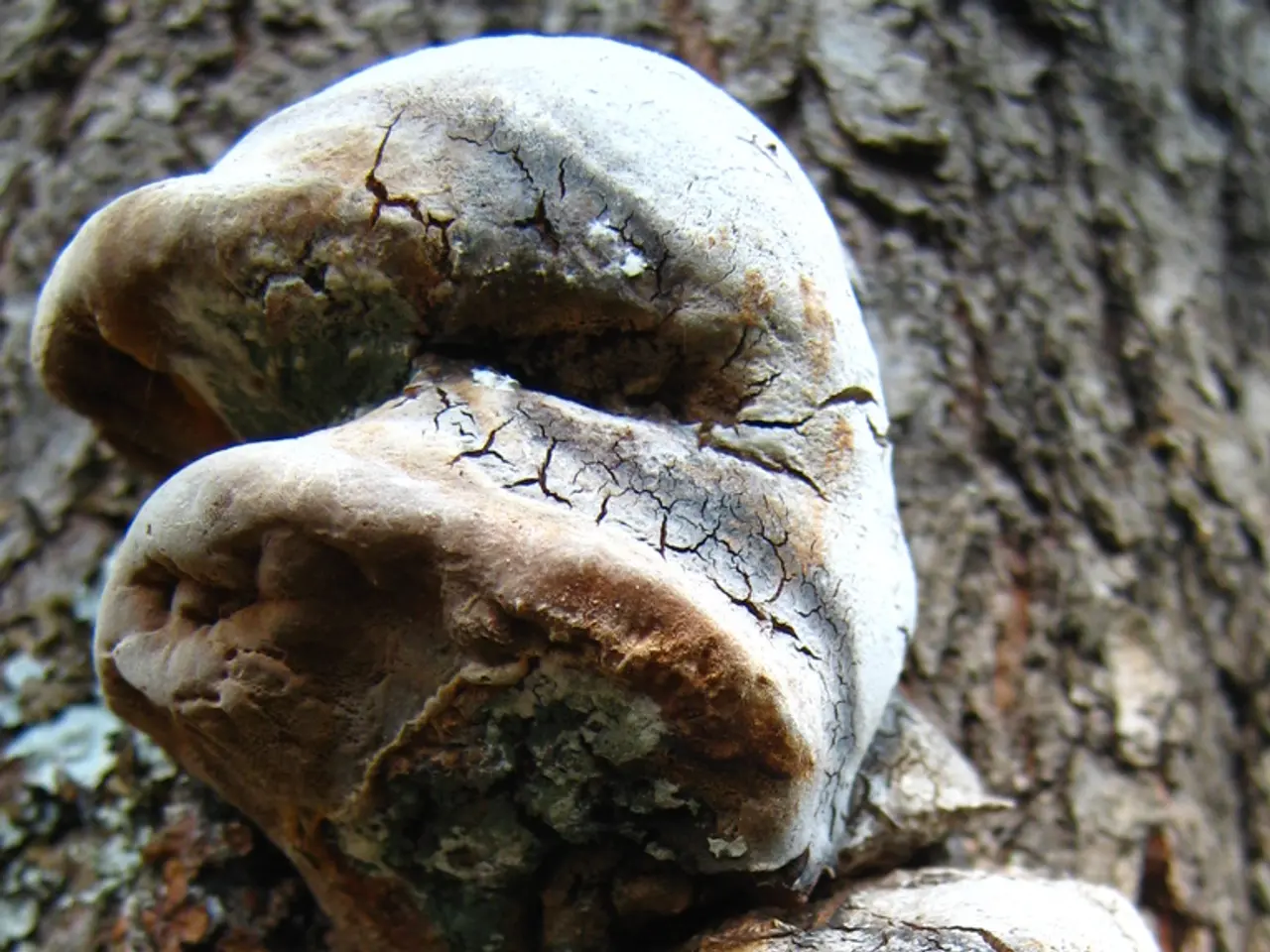Home Mold: Its Impact on Health
Mold, a type of fungus, can pose a significant health risk, especially for people with allergies, existing respiratory problems, or weakened immune systems. Cladosporium, Aspergillus, and Penicillium are common types of mold that can grow in homes, often thriving in damp environments.
To effectively prevent and remove different types of mold in your home, it is essential to focus on controlling moisture, ensuring proper ventilation, and taking prompt action when mold is detected.
**Preventing Mold Growth**
Mold thrives in damp environments, so it's crucial to keep indoor humidity below 50-60%. Dehumidifiers and air conditioning systems, especially in humid climates or moisture-prone areas like basements and bathrooms, can help manage moisture levels. Improving ventilation by opening windows and doors, using exhaust fans, and installing vents in attics and crawl spaces can also help reduce moisture build-up.
Regular inspections for signs of mold, such as musty odors, water stains, or visible mold patches, are also important. Include mold inspection as part of seasonal cleaning routines to catch any potential issues early.
**Removing Mold**
When cleaning mold yourself, safety should always be a priority. Wear protective gear, including gloves, goggles, long sleeves, and an N95 mask to avoid inhaling spores. Seal off the affected area with plastic sheets and close vents and doors to prevent spores from spreading during cleaning.
Use natural or commercial solutions like a vinegar and baking soda mix, undiluted white vinegar, hydrogen peroxide, or diluted bleach. Porous materials like moldy towels or carpets may need disposal if heavily infested. After scrubbing and cleaning, disinfect the area and ventilate thoroughly to dry it out.
For mold covering more than 10 square feet or resulting from flooding/structural leaks, it's best to hire licensed remediation professionals to ensure safe and thorough removal.
**Health Risks Posed by Mold**
Mold exposure can lead to various health problems, including respiratory issues (coughing, wheezing, nasal congestion, throat irritation), allergic reactions (sneezing, skin rashes, itchy eyes), and asthma exacerbation and increased frequency of attacks. In rare cases, exposure to toxic molds (like certain black molds) may cause more severe symptoms like fatigue, headaches, or neurological issues.
Controlling moisture and promptly addressing mold is key not only to preserving your home but also to protecting your health. By combining these strategies, you can effectively prevent, identify, and safely remove mold to safeguard your home and health.
---
**Summary Table**
| Prevention & Removal Step | Description | |--------------------------------|--------------------------------------------------------------| | Moisture control | Use dehumidifiers; fix leaks; maintain gutters | | Ventilation | Use fans; open windows; install vents | | Inspection | Check for leaks, stains, musty smells | | Cleaning | Protective gear; isolate area; use vinegar, peroxide, bleach | | Disposal | Remove heavily moldy porous items | | Professional Remediation | For extensive or flood-related mold | | Health Risks | Respiratory issues, allergies, asthma exacerbation |
- Mold can be hazardous, particularly for individuals with allergies, existing respiratory problems, or compromised immune systems.
- Cladosporium, Aspergillus, and Penicillium are common mold species that can proliferate in homes.
- To prevent mold growth, indoor humidity should be maintained below 50-60%.
- Dehumidifiers and air conditioning systems can help manage moisture levels, especially in humid climates and moisture-prone areas.
- Improved ventilation can also decrease moisture accumulation by opening windows, using exhaust fans, and installing attic and crawl space vents.
- Regularly inspect your home for mold indicators such as musty odors, water stains, or visible growths.
- Include mold inspections as part of your seasonal cleaning routines to spot issues early.
- When tackling mold on your own, wear protective equipment, including gloves, goggles, long sleeves, and an N95 mask.
- Seal off the contaminated area with plastic sheets and close vents and doors to prevent spore dispersion during cleaning.
- Use natural or commercial solutions like a vinegar and baking soda mix, undiluted white vinegar, hydrogen peroxide, or diluted bleach for mold removal.
- Porous materials heavily affected by mold, like moldy towels or carpets, may require disposal.
- After cleaning, disinfect the area and air it out to facilitate drying.
- For mold covering more than 10 square feet or resulting from flooding/structural leaks, hire licensed remediation experts.
- Exposure to mold can result in respiratory problems (coughing, wheezing, nasal congestion, throat irritation), allergic reactions (sneezing, skin rashes, itchy eyes), and asthma aggravation and increased attack frequency.
- Severe symptoms, such as fatigue, headaches, or neurological issues, may occur from exposure to toxic molds like certain black molds.
- By controlling moisture and promptly addressing mold, you can preserve your home and safeguard your health.
- Managing mold effectively involves prevention, detection, and safe removal strategies.
- Skin conditions like psoriasis, and chronic diseases like HIV, bipolar, breast cancer, AQ cancer, depression, and cardiovascular health can be impacted by inadequate home and workplace wellness, especially when exposed to environmental factors like mold.
- Addressing home mold issues and focusing on overall health and wellness beyond mold, including fitness and exercise, nutrition, and therapies and treatments for various health conditions, is essential for maintaining a healthy home environment and promoting optimal health.






